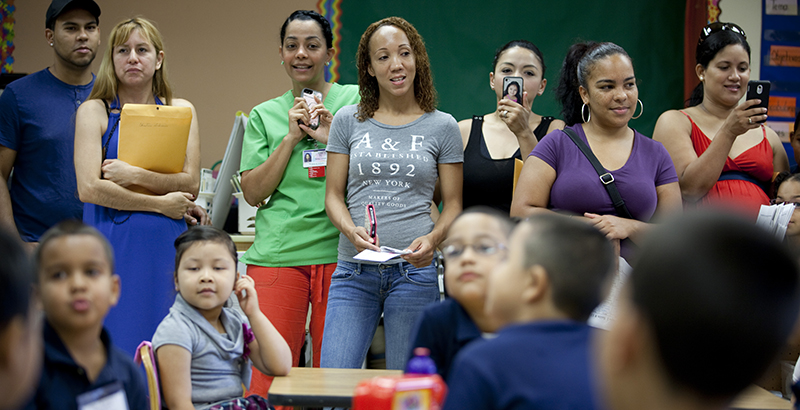In America’s Smallest State, a Proposal for a Colossal Surge in Public Dollars for Private Schools

A proposal in America’s smallest state could offer a massive surge in public dollars for children to attend private schools.
Rhode Island state Rep. Robert Lancia, R-Cranston, introduced a bill last week to raise the scholarship tax credit to $5 million from its current $1.5 million. If passed, the move would mark the second and the largest limit hike to the program, which was boosted by $500,000 in 2013 after its enactment in 2006. The state’s existing program gives businesses a minimum 75 percent tax credit for donating to scholarship-granting organizations, nonprofits that offer scholarships to students from low-income families to attend private schools. A business can receive a tax credit for donations up to $111,111 a year.
Tax-credit scholarship programs are operational in 17 states, according to the National Conference of State Legislatures. They vary in income eligibility requirements as well as whether they are open to individual or corporate tax donations.
Under the current law, Rhode Island’s $1.5 million serves 433 students, or 0.3 percent of the state’s public school students, according to the Rhode Island Scholarship Alliance. Per pupil, Rhode Island’s funding is half that provided by the nation’s largest tax-credit scholarship program — in Florida — which caps its total scholarship funding at $698 million, serving nearly 100,000 students, or 3.5 percent of its public school population.
The scholarship amount given to each Rhode Island student varies by the scholarship grant organization, but the average amount is $3,738, according to the nonprofit EdChoice.
The Scholarship Alliance could not say how many Rhode Island students are on the waiting list for the scholarship, but it said the demand is large. Only 15 of the 130 businesses that applied to donate in 2017 were accepted before the $1.5 million cap was reached. An increase to $5 million could potentially expand the program to serve over 1,000 students, Lancia said.
Between 2011 and 2015, 43,282 Rhode Island children were living in families with incomes below the federal poverty threshold — a rate of 20.4 percent, according to the Annie E. Casey Foundation’s 2017 Kids Count report. To be sure, the report’s figures include students not in the public school system. To participate in Rhode Island’s scholarship program, a family’s income must be at or below 250 percent of the poverty level.
“We have people moving into my district looking for better education opportunities for children,” Lancia said. “It would be nice if people didn’t have to move to try and get their educational needs met, that they could stay in their own city or neighborhood and find opportunities there.”
Lancia said he was inspired to propose lifting the cap as a solution to the challenge of serving the students who weren’t graduating from Rhode Island schools and were dropping out of community colleges after taking remedial classes.
And expanding the program would allow underprivileged students more options and opportunities beyond the traditional public school system to improve their educational outcomes, Lancia said. In 2016, while the overall public high school graduation rate in the state was 85.3 percent, the rate of completion among public school students from low-income families was just 78.6 percent.
He added, however, that he’s also compelled to promote the program in faith-based schools because of their emphasis on values and ethics.
But tax-credit scholarships have proven controversial with groups that argue that this tax break takes funds away from public institutions and gives them to private organizations that aren’t held accountable by the government. Schools using tax-credit scholarships neither have to follow testing requirements nor report student performance to the state.
This same bill was also introduced last year but ended up dying in the House Committee on Finance. But Lancia thinks the chances for the bill are better this year: An election year puts more pressure on state legislators to respond to constituent concerns. Lancia is also hopeful that the rising Latino population, many of whom are underserved by public schools (their graduation rate is 75 percent, as compared with the state’s 82 percent), will be interested in the scholarship opportunity.
Get stories like these delivered straight to your inbox. Sign up for The 74 Newsletter

;)
